How to Wrap your Hands for Boxing?
If you’re a new boxer or Mixed Martial artist, you’ve probably seen other guys in the gym wrapping their hands up before they put on their boxing gloves and wondered why. I mean, shouldn’t your gloves give you all the protection you need for sparring and bag work? As a Muay Thai boxer, I can tell you from personal experience that I didn’t particularly care for hand wraps and had to be forced to use them at all. However, once I started, it made a lot more sense.
[toc]
Why do you need to wrap your hands for boxing?
Boxers wrap their hands in a thin band before putting on boxing gloves and entering the ring to preserve the tendons and muscles and provide additional support for wrist movements. Boxing wraps have a Velcro strip on one end that allows the wrap to stick to itself. Follow the steps below to learn how to wrap your hands for a training session.
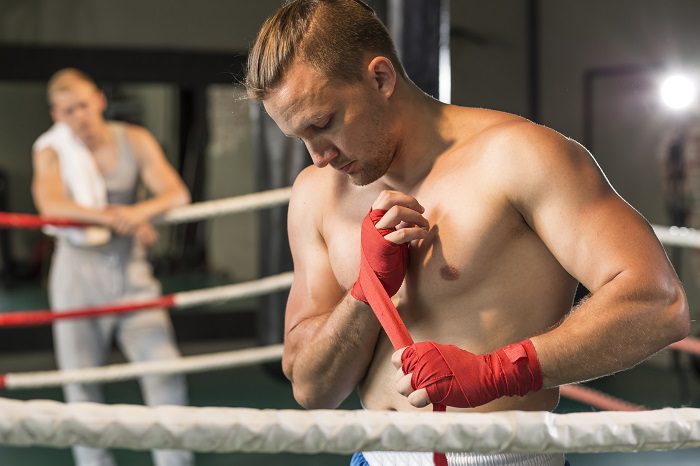
You see, calling them “hand wraps” is a bit of a misnomer; what they’re wrapping are your wrists and your thumb. If you’ve ever worked the heavy bag, you know just how much it hurts when you can’t get the force behind your punches perfectly straight and your wrist bends. This kind of thing leads to sprains, tears, and other injuries that keep you out of the gym and in rehab.
Even punching correctly can, over time, really mess up any of the bones in your hand, permanently limiting your punching power. Taking the macho attitude of ditching hand wraps to toughen your knuckles up (like I did) is a lot like riding a bicycle without a helmet; it looks cool until you disfigure yourself, then you just look dumb. Trust me, if you’re training consistently, you’ll build up strength in your hand without risking injury, even with hand wraps and gloves.
What size of hand wraps should I buy?
So, we’ve covered why you need them, now we need to figure out exactly what kind you need. A lot of this is personal preference because everyone’s bodies are different, but the basic differences are sizes and materials. The sizes are a no-brainer; if you’re a bigger fighter with bigger hands, get bigger hand wraps. As long as you can wrap them tight enough to give you solid support on your wrists and they aren’t so bulky you can’t wear your gloves, you’re good.
What materials should the hand wrap be made of?
As for materials, you’ve got two good choices, namely cotton wraps, and an elastic blend. Each one has advantages and disadvantages; the cotton doesn’t stretch and washes easily in a washing machine, and the elastic can give you a bit more support.
However, both of these are reusable, which is what I’d recommend for anybody who’s going to be working out consistently. You could buy the high-end disposable wraps, but outside of an actual fight, it’s just going to get expensive.
The different types of hand wraps that are popular with boxers are cotton, mexican, gel and competition wraps.
- Cotton wraps are a good choice for frequent training. They come in adult and junior lengths, and they are secured with velcro at the end.
- Mexican wraps are similar to cotton wraps but they are woven with elastic fibers, so they mold to the hand more easily. They aren’t quite as durable as cotton wraps because the elastic gets worn out over time, but they’re a good option for training.
- Gel wraps aren’t actually woven onto the hand, but are slipped on like fingerless gloves. They are more expensive than cotton or Mexican wraps. They are convenient to slip on, but they don’t provide as much wrist support as traditional wraps, and for that reason serious boxers don’t usually opt for gels.
- Competition wraps are composed of gauze and tape. Boxing rulebooks specify the exact amount that can be used, to make sure each boxer has the same amount of padding. Since these wraps aren’t reusable, they aren’t practical for use during everyday training. The wrapping technique for competition wraps is also different and should be done with a partner or coach.
How to wrap your hands for boxing?
Now, the actual process of wrapping your hands may take a bit of work to learn, but once you learn it, like tying your hair knots, you don’t ever forget. While everyone has their way of doing things, I’d like to show you mine; if your gym wants you to do something different, then do so.
- First, place your hand palm-down and spread your fingers. Find the thumb loop on the end of your wrap and slide it over your thumb. If you’ve done it right, the material should be laying flat across the back of your wrist.
- Next, wrap the material around your wrist twice. Make sure you wrap it tight enough to give you support, but not so tight you lose circulation in your hand.
- Wrap the material twice around your palm, then wrap it once more around your wrist.
- Roll the material around the back of your hand and your thumb twice. Roll it around your wrist once more.
- From the inside of your wrist (the side where your thumb is), roll your wrap between your pinky and ring finger. Return to the inside of your wrist and repeat for the spaces between your ring and middle finger, and again for the space between your middle and index finger.
- Tightly wrap the material around your knuckles twice.
- Roll your wrap back down to your wrist and secure it with Velcro.
For another method of wrapping your hands, look at this great Wikihow article
If it sounds complicated, don’t worry; it does get easier.
As a general rule, you don’t want to twist your hand wraps at any point; if you need to twist them, then somewhere along the line, they were already twisted. Keep them wide, wrinkle-free, and cover as much of your hands as possible.
Making sure your hands are properly wrapped means that you can spend more time training and less time being injured. Wrap your hands the right way and you can practice punching with all your strength, rather than building bad punching technique because you’re afraid of injuring yourself.
Check our video tutorial above on how to wrap your hands for Boxing, Kickboxing, MMA, Muay Thai, or any other contact sport.
Here are some of the best hand wraps for boxing
What hand wraps do you use for boxing? Let us know in the comments
Discover knockout gifts for combat sports fans and enthusiasts on our Gifts Page, just in time for the holiday season and Amazon Prime Day. Get ready to surprise your favorite fighters with the perfect presents they’ll love! You can’t go wrong with any of these gifts, they are all unique and made for people who love combat sports!
Looking to buy other boxing products, for boxing visit the following best list articles best boxing headgear, best boxing gloves overall, best boxing gloves for competition, best boxing shoes and best boxing shorts. We also have some great reviews written by experts for MMA & BJJ enthusiasts as well, best MMA gloves, best MMA headgear, best BJJ headgear, best BJJ accessories & best BJJ knee brace.
For those who of you that practice combat sports for fitness, here are some must have products best free standing punching bags, best supplements, best martial arts weapons.
For some of us that love good products without having to break the bank best boxing gloves under $100, best boxing shoes under $99, best boxing headgear under $50, best boxing bags under $50.
For brand related articles, check Best Hayabusa | Best Winning | Best Everlast | Best Cleto Reyes | Best RDX | Best Rival | Best Venum | Best Ring to Cage

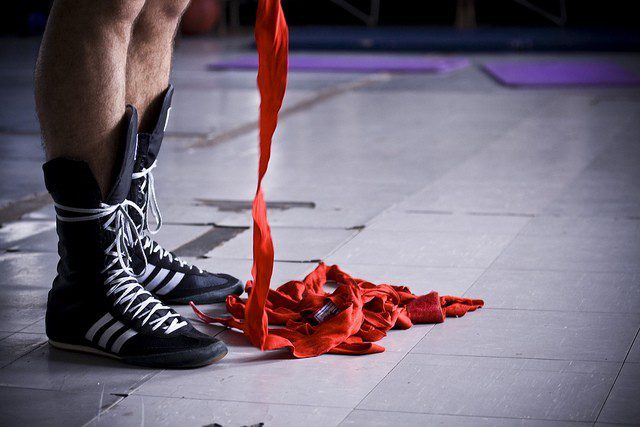

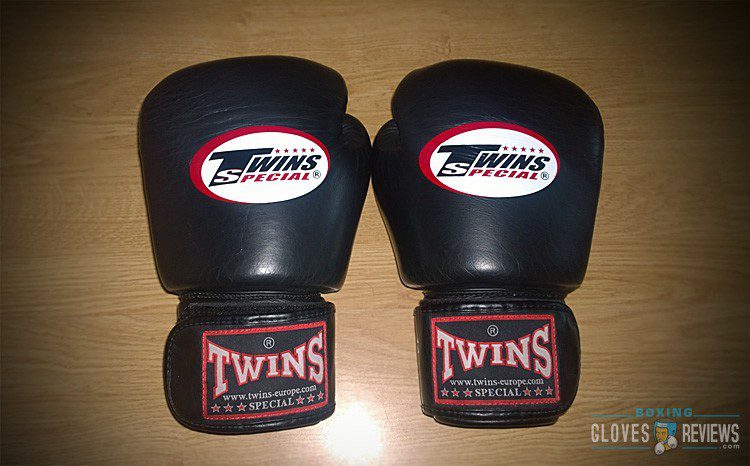


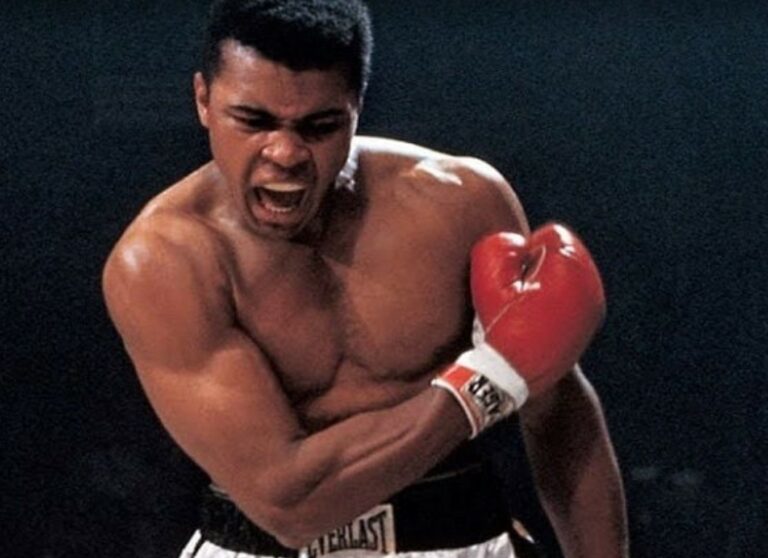

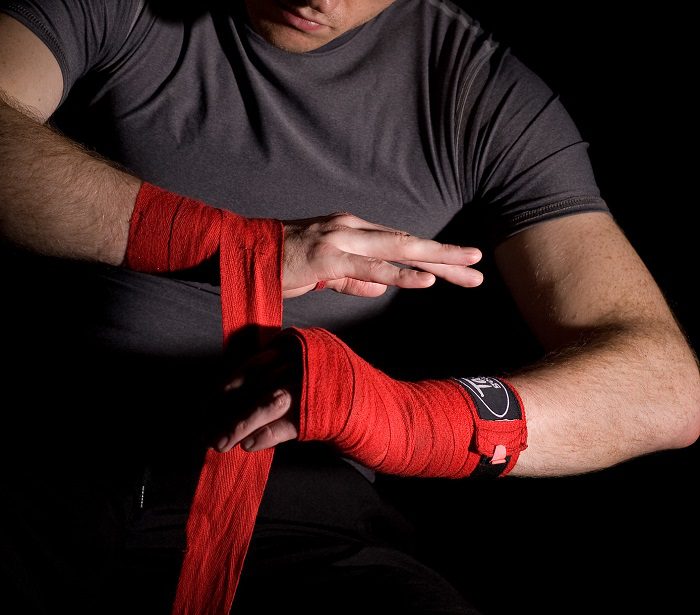

Why We Do Not Twist Our Hand Wraps At Any Point ???
You generally don’t want to twit your hand wraps for two reasons. The first being that, at the end of the wrap, your hook/loop closure will suddenly be on the wrong side. This is why many wraps have, “THIS SIDE DOWN” printed on half of the wrap. The second reason is that you are relying on the width of the wrap to provide the compression and support needed to protect the bones and joints in your hand and repeated twists compromise that structure.